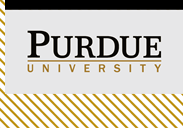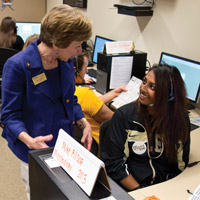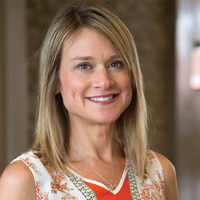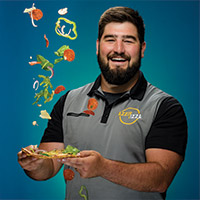At the Speed of Technology
Cutting-Edge Collaborations Help HHS Researchers Bring Innovative Products to the Marketplace
Sacrificing wealth for public health
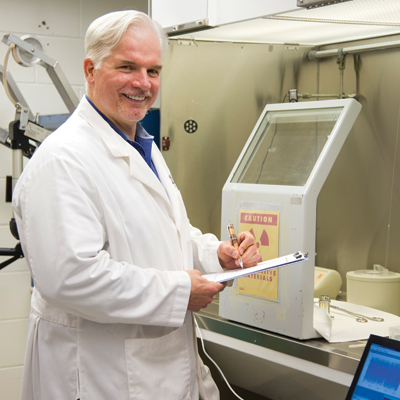
Developing Technology: Jim McGlothlin, associate professor of industrial hygiene and ergonomics, owns two patents related to video exposure technology. (Photo by Mark Simons)
Jim McGlothlin, associate professor of industrial hygiene and ergonomics in the School of Health Sciences, has spent the better part of his last 30 years trying to adapt technology for healthy matters. In the 1980s, he worked with C. Everett Koop, perhaps the most famous of U.S. surgeons general. Koop cautioned the young man about going into public health for the money. It's a philosophy McGlothlin has taken to heart.
McGlothlin owns two patents related to video exposure monitoring, which also dates back to the mid-1980s. The technology, continuously updated through the years, allows for video with a time stamp that also integrates sensor information of four types — chemical, radiological, physical or biological. The far-ranging applications could include everything from identifying epidemic viruses to an exact time and spot, an automated safety-net device for people with Alzheimer's disease (perhaps turning off an unattended stove) and bioterrorism security.
On sabbatical last year in Australia and New Zealand, McGlothlin gave seminars on the developing technology. "They were ecstatic about it," he says. "In Wellington, the wood industry is thriving because they can grow California pine three times faster. There are lots of mom and pop cabinetmakers all over the place. But all the particles in the air of those shops can lead to respiratory issues."
Through video exposure monitoring, McGlothlin identified that 80 percent of the exposures were related to three or four machines. "We contacted woodshop owners and put information on the Internet on how to build a downdraft table that would eliminate 80 percent of the wood dust."
And though many of the shop owners weren't thrilled about some of the extra work associated with the downdraft tables, they soon learned that they could begin laminating their products in the same afternoon, instead of waiting another day for the air to clear. The safer business practice actually doubled their productivity, McGlothlin says, becoming a perfect business model.
McGlothlin seems less concerned about his own bottom line. Rather than guard his patents for fear of people taking advantage of them, he makes them free. "You can't beat free," he says.
That common good resonates throughout his work. In February, he donated his share from each sale of a new online app to the Human Factors and Ergonomics Society (HFES), a student club. The app (NIOSH RWL) goes for $2.99. A mobile version of a calculation model known as the Revised NIOSH Lifting Equation, it calculates the Recommended Weight Limit (RWL) and a Lifting Index (LI) to help a user analyze a lifting job and the risk of back injury.
While on sabbatical, McGlothlin charged Ben Claus, a graduate student in aeronautics and astronautics, with making the device mobile by designing the app. Apple, Claus and HFES (McGlothlin's donation) each get $1 per sale.
For all the heavy lifting he did in his younger days, this idea of making impact over making money sits well with McGlothlin. It might have impressed Koop, his old boss, too.


